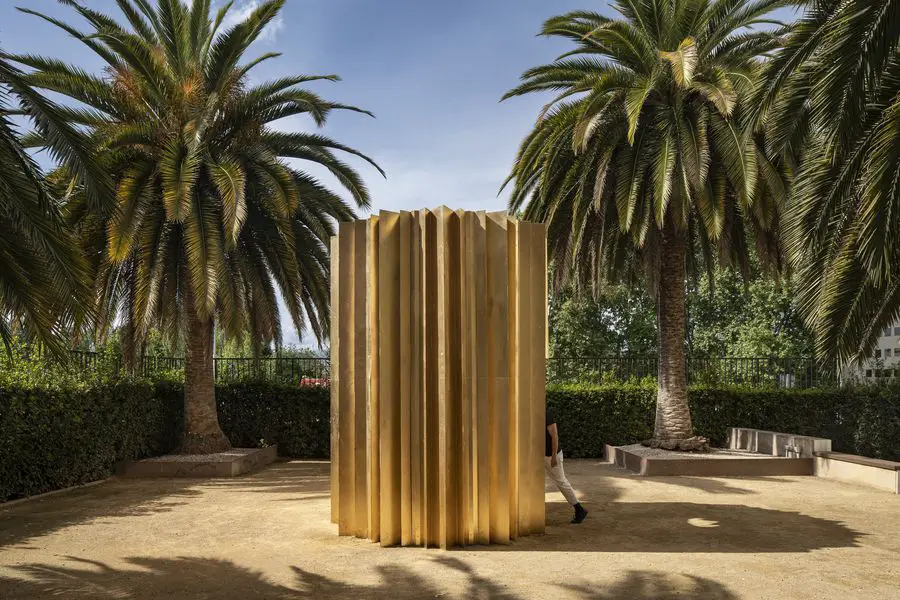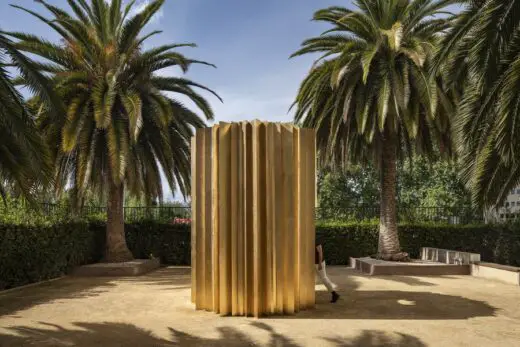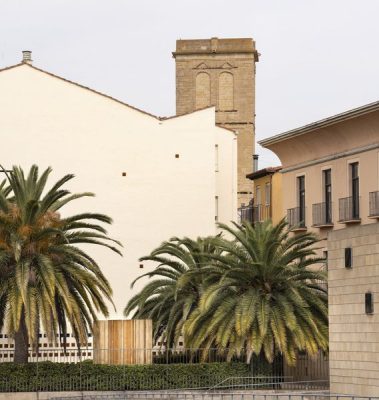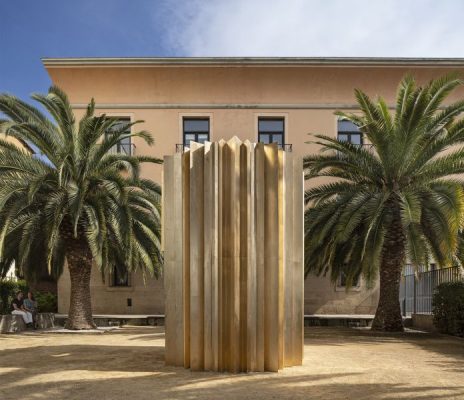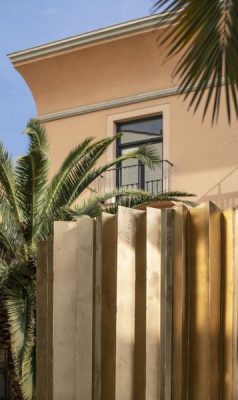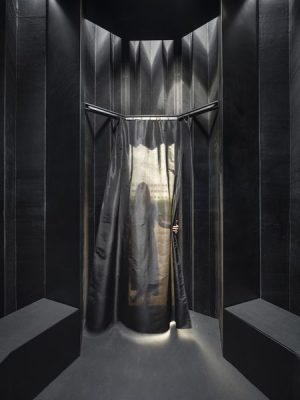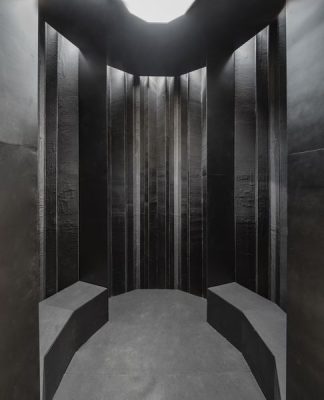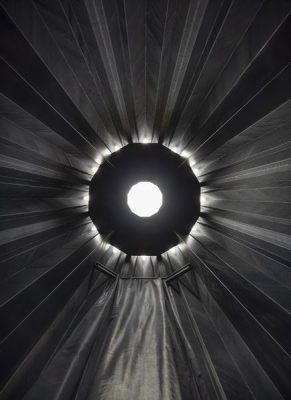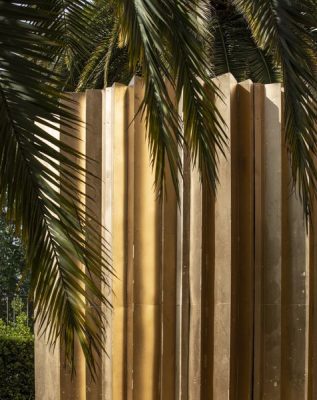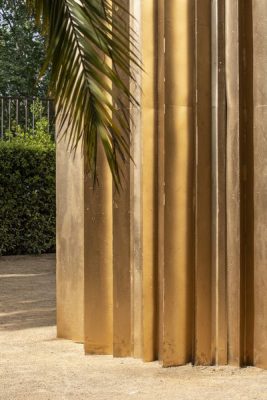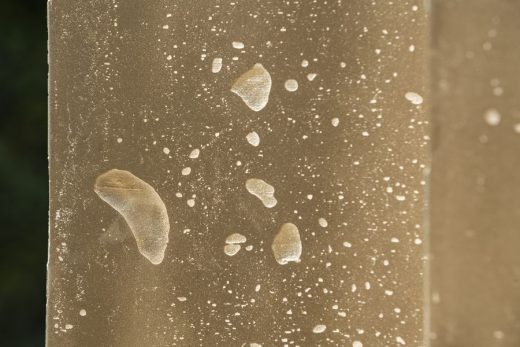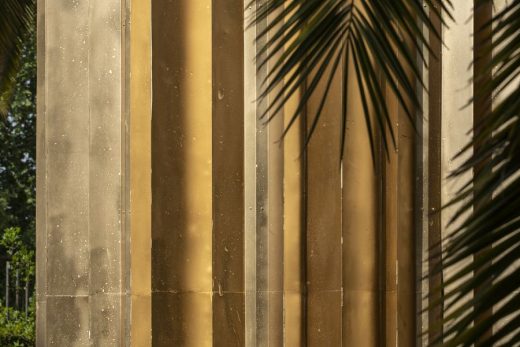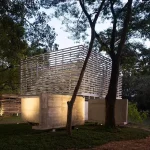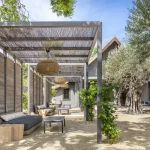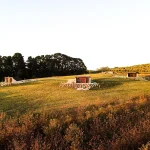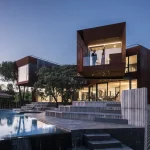The Silk Pavilion by Paloma Cañizares, Madrid architecture news, Spanish architectural project pictures
The Silk Pavilion in Madrid
14 September 2023
Design: Paloma Cañizares
Location: Madrid, Spain
Photos by Josema Cutillas
The Silk Pavilion, Spain
The Silk Pavilion is the initial outcome of the research efforts on woven fabrics, undertaken by Paloma Cañizares Office to delve into the structural potential of stiffened textiles.
After years of research, a life-sized pavilion featuring rigidized silk panels was unveiled at the ninth edition of Concéntrico, the International Architecture and Design Festival of Logroño. Following this, the pavilion was later installed in the gardens of Nuevos Ministerios in Madrid, at the request of the Ministry of Urban Agenda.
Silk as a Building Material
If we consider the fabric’s structure as the framework of a slab and we reinforce and fold it, we can achieve a self-supporting surface of exceptional slimness and lightness. Furthermore, when this element is molded, we can create a prefabricated modular unit that serves as both a structure and an enclosure, offering a straightforward assembly system with high versatility.
Silk ranks among the most resilient natural fibers, boasting four times the strength of steel at an equivalent cross-section. This unique attribute endows the fabric with measurable structural possibilities once rigidified. Furthermore, the inherent lightness of silk is another enticing aspect, allowing us to achieve the sought-after synergy of strength and lightweight properties.
Geometry is the next fundamental factor in achieving self-supporting capabilities. At this point, the endless formal possibilities of silk come into play, although we must adapt to the limitations of the fabric which is 1.40 meters. To create the mold for the pavilion, a simple three-pointed element has been designed and repeated 12 times to form a dodecagon. The entire structure for which 100 linear meters of fabric were used, becomes a stable enclosure that defines a space. All of this is accomplished with a 0.5 mm thick element primarily used in apparel and decoration.
The outcome is a pavilion resembling a star, which explains its golden hue. The panels are coated on the outside, revealing the silk’s black color on the interior. Four triangular metal pillars support a roof featuring a dodecagonal oculus, all of which are lacquered in black. The space is slender, vertical, and dim. Nevertheless, the oculus is not the sole light source. Triangular beams of light project between the roof and the enclosure, creating a new star that shifts with the sun’s movement.
In Context
Concéntrico is an annual international festival of architecture and design held in Logroño, Spain. The festival offers a profound exploration of urban spaces and the city, accomplished through thought-provoking interventions that encourage participants, visitors, and residents to engage with the environment in new ways and reimagine the city’s possibilities.
The Silk Pavilion was conceived for the courtyard of the College of Architects of La Rioja. Enclosed and built with compacted earth, the courtyard stands adorned with four grand palm trees, evoking a verdant and exotic ambiance that resonates with the city’s Arab heritage (Logroño was under Arab rule for nearly three centuries). This botanical inspiration forms the basis of the pavilion’s geometry.
Light and shadow play a central role in the design, creating an ever-changing experience. The shifting patterns of vegetation shadows cast upon the pavilion, the pavilion’s shadows upon the earth, and the interplay of light within the structure itself, all contribute to the captivating ambiance. The pavilion presents an unexpected element, intriguing visitors to explore and seek its entrance, while the interior space harmoniously contrasts with the surrounding exterior, completing the immersive journey.
For the second location of the pavilion in the gardens of Nuevos Ministerios in Madrid, we sought a site surrounded by lush vegetation, offering a winding pathway and a discreet, not immediately apparent entrance. Although this new setting deviated from the original context for which the pavilion was initially designed, the gardens within the urban expanse of Madrid, shielded by an elegant arcade, provided a similar environment of sheltered spaces amidst verdant surroundings.
Our research endeavors to explore innovative construction possibilities: faster, lighter, modular, reusable, adaptable, and with limitless artistic potential. We firmly believe in the interconnectedness of various disciplines and the scalability of systems, leveraging the power of simplicity to tackle complex challenges. Moreover, we recognize the profound influence of spatial qualities, serving as vehicles that impact the emotional states of the individuals inhabiting them.
The Silk Pavilion, Madrid – Building Information
Studio: Paloma Cañizares Office
Author: Paloma Cañizares
Website: www.palomacanizares.com
Social media: www.instagram.com/palomacanizaresoffice
Design team: Luis Mínguez González, Pablo Mayoral Sánchez
Client: Concéntrico
Project location: The Official College of Architects of La Rioja in Logroño / The Ministry of Urban Agenda in Madrid
Project country: Spain
Completion year: 2023
Built-up Area: 5,30 sqm
Photographer: Josema Cutillas, www.josemacutillas.com
The Silk Pavilion in Madrid images / information received 130923 from Paloma Cañizares Office
Location: Madrid, Spain
Architecture in Madrid
Madrid Architectural Tours by e-architect
Spanish Capital Architectural Designs
Madrid Architecture Designs – recent architectural selection from e-architect below:
Álamo House
Design: Fran Silvestre Arquitectos
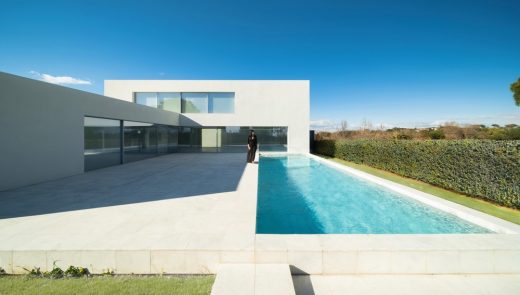
photo : Jesús Orrico
Álamo House
Norman Foster Institute Launch News
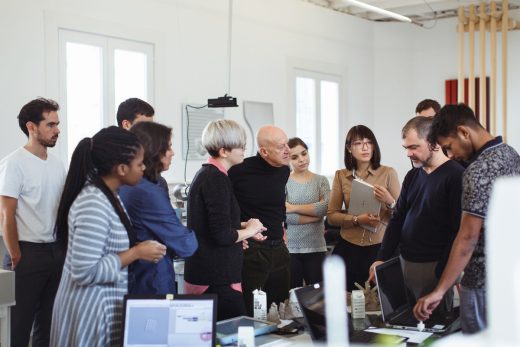
photo © Pablo Gómez-Ogando / Norman Foster Institute
Norman Foster Institute Madrid
La Maruca
Design: ZOOCO ESTUDIO
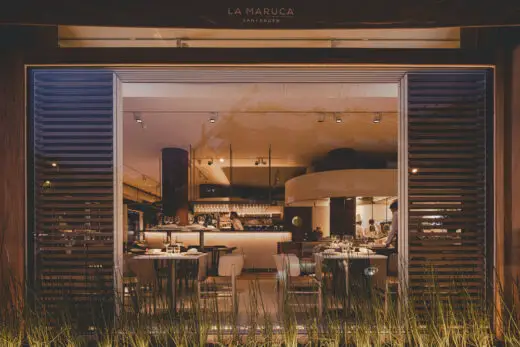
photo : David Zarzoso
La Maruca de López de Hoyos Restaurant
Design: UNStudio, with b720 Arquitectura and engineers Esteyco
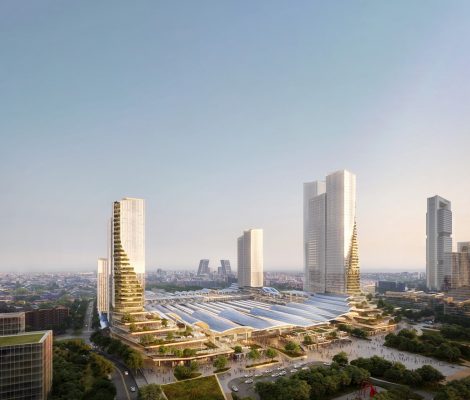
image : bucharest.studio
Madrid-Chamartín: Clara Campoamor Station
Buildings / photos for the Norman Foster Institute Madrid page welcome
Website: www.fosterandpartners.com

